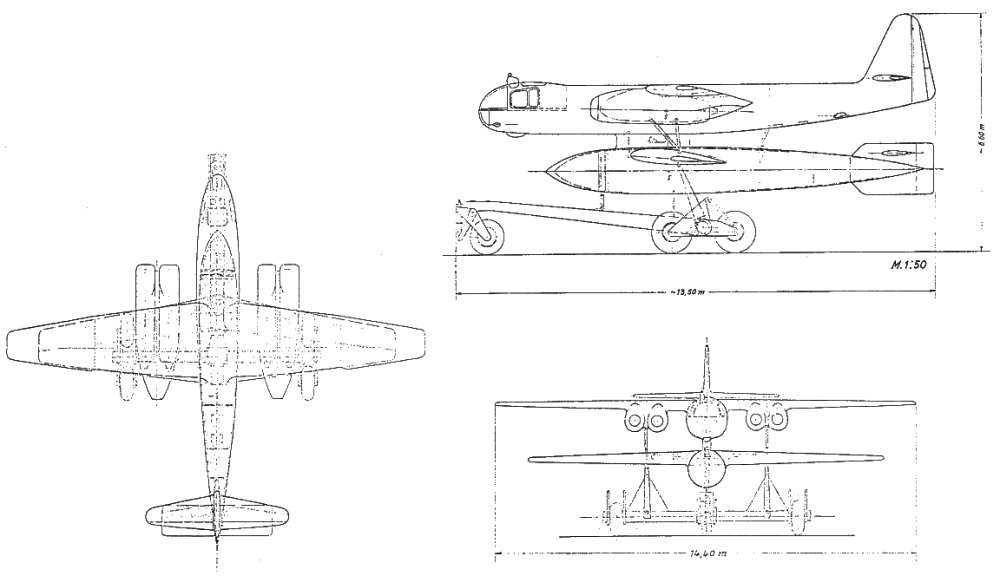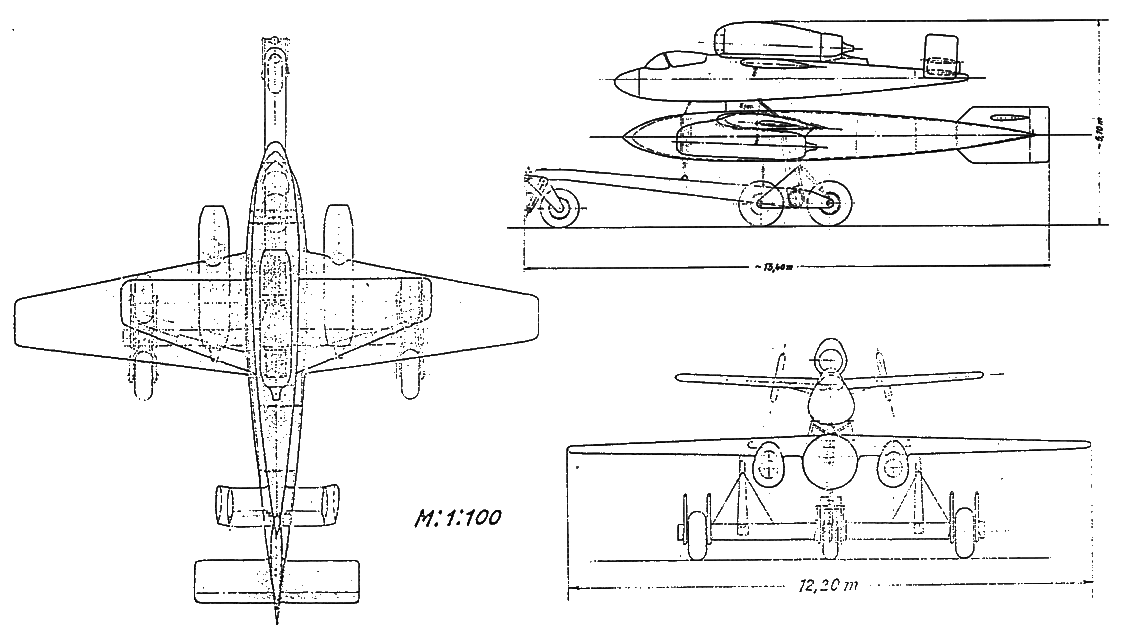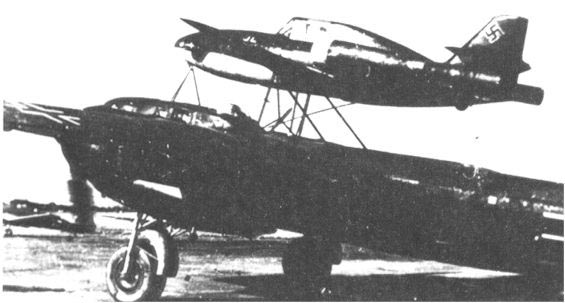Mistel composite attack aircraft:
Early development.
In search of a better means of towing transport gliders than the previous rope towing method, research was conducted by the Deutsche Forschungsanstalt für Segelflug (DFS) at Ainring near Freilassing (Bavaria).
In addition to fixed towing, this research included the piggyback or “Mistel” (mistletoe) method. With this type of towing, it was planned to affix a smaller motorized aircraft to the larger DFS 230 transport glider using a detachable connector.
The intended goal: takeoff on its own power, i.e. dispensing with a tow plane, and then having the Mistel combination separate at a preplanned altitude and preplanned time.
The testing program began on 1 September 1942, Fritz Stamer viewed the Mistel Gmposition with a rather large mething like this had been tried in Germany.
The British “piggyback aircarft” Short Mayo version, which had previously been flown with success, was known to the group. But at that time much experimentation was being done in the field of aeronautics, and so it was that these British flights didn’t spark any particular interest.
In any case, DFS “reinvented” the Mistel towing method, meaning that it was developed independent of the research and testing results of another group.
The first Mistel combination was a Klemm 35 supported on a DFS 230 transport glider. The connection between the two planes consisted of a rope pyramid, the uppermost point of which was attached to the fuselage underside of the Kl 35.

The Klemm’s tail strut rested on a vertical hollow steel tubing brace, so that the upper aircraft had the same flight attitude as the glider. The landing gear sat in wheel supports which were attached to the wings.
The rope pyramid was stressed in such a manner so that the landing gear suspension on the Kl35 was fully compressed.
When the connection was released, the aircraft was then given an additional “boost” upward, quickly separating itself from the transport glider.
A ju 52 served as a tow plane, The Klemm’s motor was running at full throttle, which shortened the takeoff run. The planned altitude of 2000 meters was attained without incident, and the Mistel was released from its Ju 52. After descending 500 meters the team separated, having determined that the engine of the Ki 35 was too weak to maintain altitude with the DFS 230.
Separation occurred without mishap. Karl Schieferstein
gave the Klemm full throttle and at the same time Kurt Oppitz slowed his bird down; the Klemm immediately pulled up and away. the test was completed succesfully several times, The next option was for an combination capable to take off under its own power.




















